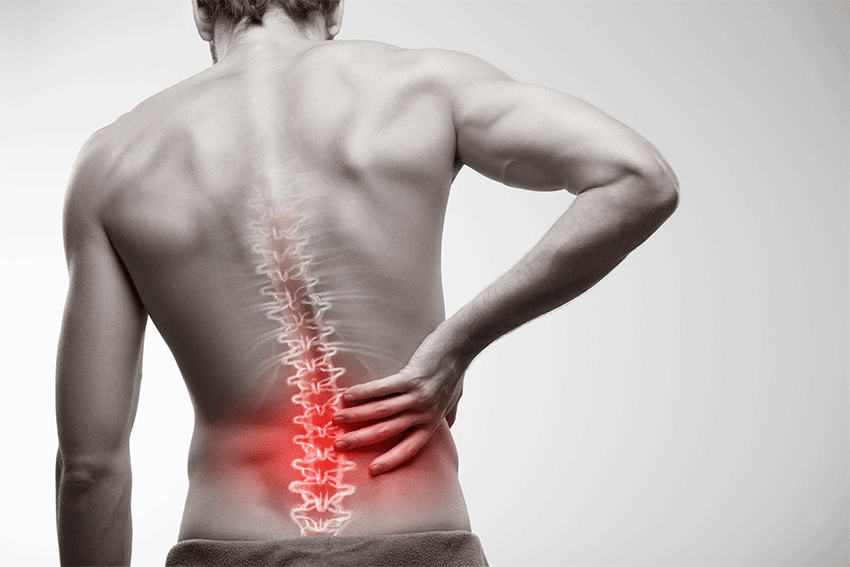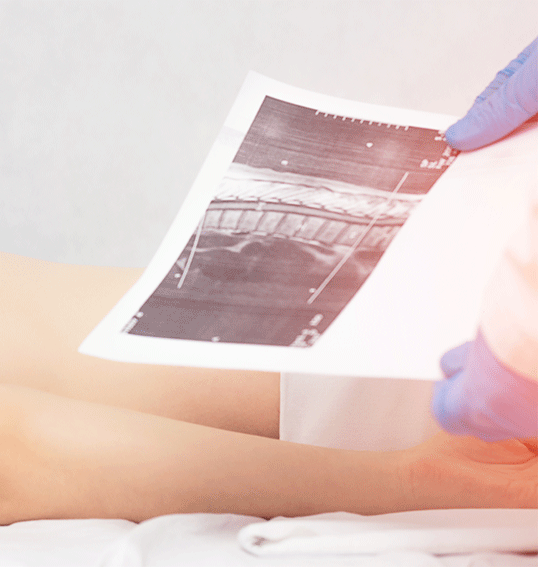What Is Discogenic Lower Back Pain?
Incredibly, about 80 percent of the population will have lower back pain at some point in life, and many will have chronic pain. Most people relate chronic low back pain to advanced age, but it actually accounts for the single-most mobility limitation in people under the age of 45. Lower back pain can affect anyone at any age at any time. Disc degeneration or Discogenic Lower Back Pain (DLBP) is a main cause of low back pain at any age. Spinal discs can begin to degenerate as early as age 30, and increasingly so with age. Many people have anatomical disc structures that accelerate degeneration.
Lifestyle choices like obesity or smoking make the condition worse, as do environmental factors like vibrations from driving. Abnormal stresses from activities like driving or repeated heavy lifting can reduce the amount of water inside the nucleus of the disc, causing degeneration to set in.

Once degeneration starts, the disc is unable to evenly distribute stresses. Activities like heavy lifting or twisting motions that create localized increased stresses further complicate the issue. As stresses are not borne equally, inflammation occurs due to structural tears or ruptures in the disc. The inflammatory response of the body is initiated. Indeed, past research has indicated that patients with DLBP do exhibit higher sustained levels of inflammation markers like interleukins 1, 6 and 8. The interleukins in turn stimulate pain receptors on the free nerve endings. Lower back pain often then progresses into a chronic condition that decreases mobility and quality of life. Workplace productivity is greatly impacted and there are enormous medical costs associated with lower back pain treatment.
Diagnosis is Difficult
Doctors still face a big challenge regarding diagnosis of lower back pain. In patients with discogenic lower back pain, there are often no obvious outward signs that the disc is degenerating. Often there is no sign of herniation either. Radiologists typically cannot find any evidence, so doctors have difficulty finding a root symptom or cause.
However, internal to the disc, inflammation and degeneration are likely occurring. Interestingly, there are pain receptors inside the disc, and inflammation and degenerative processes can both stimulate these receptors. DLBP can also have genetic predispositions. Many patients with a genetic susceptibility experience both chemical and biological changes of the disc’s internal composition and as such are considered to be high-risk patients. All these factors demonstrate why physicians consider DLBP to be a complex issue that is hard to diagnose.
Many doctors’ “gold standard” for diagnosis of discogenic pain is an imaging modality called CT discography or provocative discography. However, this is an invasive procedure, and there is a great deal of clinical evidence that shows patients experience a much higher risk of accelerated disc degeneration after having the procedure. The discography method also has a very high false positive rate. Therefore, doctors typically only use discography on patients who are already planned for surgery; in other words, the discography is a confirmation to help with the surgery rather than a true diagnostic procedure.
MRI is the most frequently used non-invasive imaging method to diagnose DLBP. For age-related degeneration of the disc, dehydration and degradation of the disc usually show up on an MRI pretty clearly, known as the “black disc”.
Using MRI, doctors classify disc degeneration into five categories or grades. Grade 1 represents a normal disc, while grades 2 to 5 represent increasing severity of degeneration. However, diagnosis by MRI can be very difficult. As the lumbar vertebrae degenerate, radiologists can often have trouble distinguishing which discs are actually generating the pain.
Over time, doctors began to recognize a pattern called the high intensity zone or HIZ on MRIs of the lumbar spine. The HIZ is an area of bright white high intensity signal. Doctors have observed a very close relationship between the HIZ zone and disc pain. Most experts agree that inflammation causes the HIZ zone to appear as bright white on the MRI. The HIZ zone has since proved to be a positive predictor of DLBP in 90 percent of all cases of low back pain.
An Ideal Diagnostic Method?
Even with HIZ, diagnosis is still difficult and doctors are in agreement that an ideal diagnostic method still does not exist in clinical practice. Research seems to indicate that serum biomarkers might offer a more accurate and reliable method. Researchers believe that studying the serum of patients with DLBP can lead them to identifying candidate biomarker proteins that are hallmarks of the disease.
Use of serum biomarkers is an emerging area of science; it may show promise because serum is easy and safe to obtain and the biomarker analysis is easy to standardize, so it can be reproduced to use for all patients. Since diagnosis of any disease usually involves medical history, symptom analysis, physical exam, imaging and lab tests, serum biomarker tests may fill that gap for DLBP. Quite often, laboratory tests indirectly indicate tissue damage; the DLBP serum biomarkers serve as indicators that biological processes may be involved in discogenic pain.
There you have it. This is a synopsis of the current state of diagnosis of discogenic lower back pain. Researchers are continuing to pursue new diagnostic methods, but they need to be safe, accurate, convenient and cost-effective. Serum-based biomarker tests might just fill that order.
